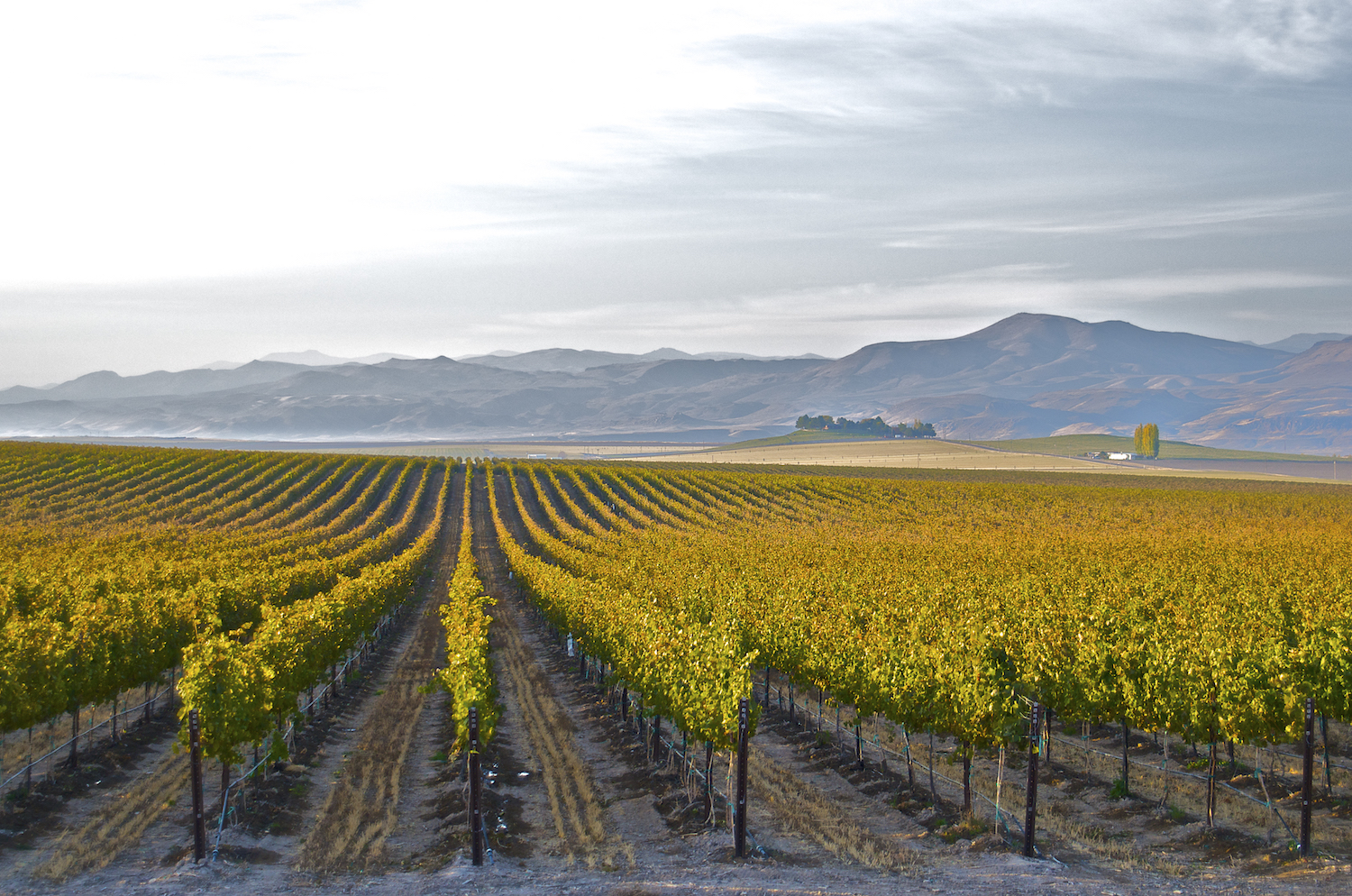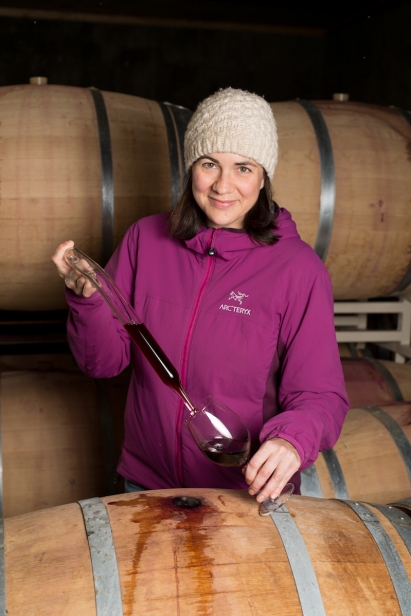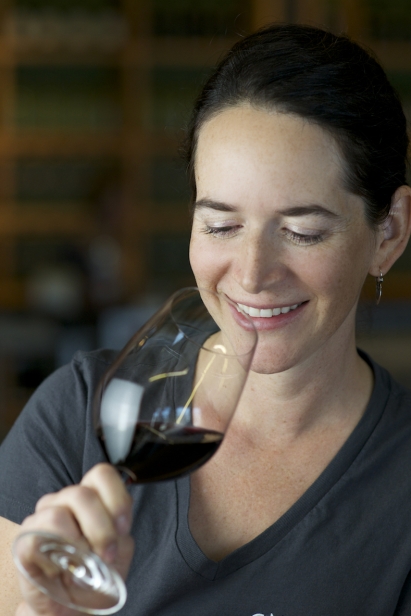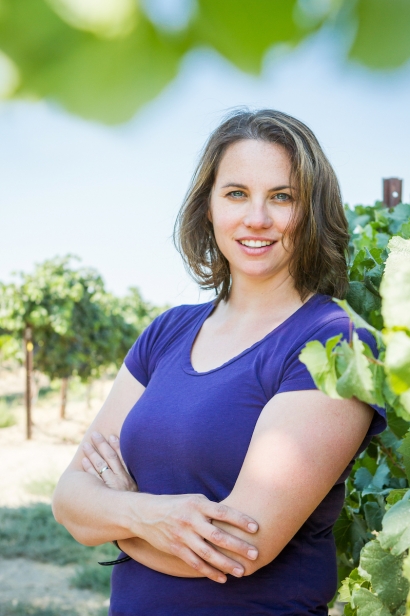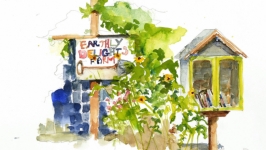Pressed for Success: Idaho’s Wine Women are out to Conquer the World—Together
The long stretch of Canyon County’s Chicken Dinner Road looked unremarkable enough. The sunbaked fields and weathered farmhouses beckoned to the Treasure Valley’s disappearing agricultural roots. To the untrained eye or lost motorist, the area looked like the middle of nowhere rural, USA.
But those in the know recognize the “Chicken Dinner” name as Huston Vineyard’s humble and award-winning line of rosé, red and white table blends that lend easily to daily drinking with fruit-forward finishes and versatile pairing ability. They also know that Chicken Dinner Road, in one way or another, leads to more than a dozen area wineries and vineyards that sprout from some of the best terroir wine experts are just beginning to acknowledge.
Though overlooked by those who prefer to focus on traditional winemaking areas like California, France or Italy, the relative obscurity of Idaho wines isn’t likely to last. Moya Dolsby, executive director of the Idaho Wine Commission, says growers can find success if they’re brave enough to come to Idaho. “It’s poised for growth. We have great soil, we have a great climate.”
Idaho boasts ideal natural resources that make the region a prime terroir for red and white varieties such as Chardonnay, Riesling and Viognier. A warm climate, well-drained soils and direct access to water resources position the state to sustain world-class vineyards and wineries.
Although Idaho wines have largely flown under the radar, many of the producers brave enough to venture into Idaho wine territory just so happen to be women. Collectively, industry insiders and the wine press have dubbed these women among the more notable and distinguished winemakers in the state. The obscurity of the Snake River plain and the rich soils laid by long extinct volcanoes recently earned the region a Travel + Leisure headline calling it “The Award-Winning Wine Valley You’ve never Heard of—Until now.”
“Out of the top 15 winemakers in the state, about 12 are run by women winemakers,” says Cinder Wines owner Melanie Krause. “There are so many of us that people get us mixed up like crazy because they think there’s only one or two of us.”
Growers planted the state’s first grapes in the 1860s in Lewiston. There and in other parts of Idaho, modern wine makers work to deepen the roots and reach of the state’s wines.
A rich agricultural history unfolded in the region around Lewiston straddled by glacial deposits that time carved into rolling hills and earned the Palouse’s agrarian landscape the moniker “Tuscany of North America.” But area winemakers must still blaze trails to develop a consumer base that takes Idaho wines seriously.
“It’s a Bud Light–drinking crowd. People thought we were crazy putting wineries here,” says winemaker Melissa Sanborn from Colter’s Creek Winery in Juliaetta. “It’s the snobbery factor that a lot of people thought had to do with wine. So that’s been a challenge,” she says.
Idaho winemakers overall remain the new kids on the block and northern Idaho winemakers work in a region that many still don’t associate with winemaking. sanborn says it’s hard for area winemakers to even find regional winemaking suppliers and consumers don’t always ask restaurants and hotels about local inventories.
“Idaho distributors still have a stigma against Idaho wines,” she says.
The state’s vintage improvements and increasingly competitive winemaking techniques sometimes go unnoticed when drinkers habitually select bottles from more well-known regions. But consumers can do a lot to lift that stigma by asking for Idaho wines, sanborn says.
“If you can’t get them to take you seriously, you can’t get them to distribute your wine,” she says.
That leaves Idaho’s present-day total of 52 wineries mapping uncharted territory in the global wine scene. California wines didn’t start winning international acclaim until the 1970s after meeting plenty of pre-competition skepticism, after all, reminding Idaho winemakers of their infancy.
You can thank many of Idaho’s winemaking women heralding the secrets of the state’s wine regions with inventive vintages that earn awards, accolades and media attention. “You have this group of women in Idaho and if you peel back the onion, you see that they trained outside of Idaho and came back to Idaho. For a lot of us, one of the main reasons we moved here was because of the quality of life,” says Kathryn House, founder of the House of Wine.
According to the Idaho Wine Commission women make up 22% of those who own or co-own vineyards and are winemakers in the state.
That rate is at least double that of neighboring and more well-known wine states California, Washington or Oregon. many of these Idaho women come well-degreed in viticulture and enology with considerable training from Washington and California wine regions under their belts. They come ready to heed the challenges of crafting wines from grapes subjected to weather extremes and grown on vineyards that range in elevation from 600 to 3,000 feet above sea level.
House, for example, moved from Seattle to Boise for a dream job in wine consulting and education and a short work commute. “I view myself as someone who isn’t afraid of the potential, of possibilities. I’m excited by the potential of the area,” she says.
“I love the connection not just to the wine but to the food and the land. We haven’t lost that here,” she says. Plus, “We have the ability to grow whatever we want. There’s not a lot of restrictions.”
Sure, there’s that great soil and climatic extremes that make for highly aromatic blends, but House says the potential of Idaho winemaking lies in the people behind the bottles.
“We’re all pretty strong women, which makes for a great conversation,” House says of colleagues who she describes as brave, pioneering women with a lot of smarts and no fear of getting a little dirty. “We equally love getting in our Carhartt’s and love digging in the dirt.”
She adds, “A lot of women tend to multitask unintentionally.” That’s a handy skill when you need to keep an eye on the meteorology, geology, horticulture, chemistry, finance and sheer art that must perfectly collide in optimal conditions to craft a bottle of wine.
“There are so many aspects of being a winemaker. You need to be open to trying new things. I’m actually more conservative of a winemaker,” says Sawtooth and Ste Chapelle winemaker meredith smith.
Great winemaking requires great collaboration, she says. “I taste wine with a lot of different people. Learning is everything.” And listening is key, she says. “Constructive criticism can be hard for some people to take. Honest feedback can be hard.”
Smith discusses wine like a part coach, part tenured science professor and part best friend. “I have always enjoyed wine,” she says. And, “I’m not afraid of taking risks.” But still, she never considered it a moneymaking day job so she pursued a career in business and real estate.
“I was making money, I felt accomplished in finance but something was missing,” she says. “I read that you should pay attention to what you’re interested in.” So, at 36 years old, Smith decided to enroll in viticulture and enology classes at Washington State University. Soon, she started to see other winemakers move to Idaho.
“I thought, ‘I am going to go (there),’” she recalls “I got help from my mom. She filled my gas tank.” And at 40 years old, Smith drove into a new, wine-drenched Idaho life. “My dad said, ‘You don’t want to regret going down a road.’ He’s right. I thought, ‘I’m going to go for it. You never know where it’s going to take you.’” The road also took her Chateau series soft Red and Chardonnay to the Idaho Wine Competition where the wines won gold and silver awards, respectively.
“Some people say it takes a big winery to come in here, something like a Château Saint Michelle to boost the Idaho industry. That may be the case, but I also think that if you take what we have now and grow the best possible grapes and make the best possible wine and submit it for a competition and it gets a 98 or 100 for its score, I guarantee you people are going to take note,” smith says.
She is also looking for ways to help other producers grow premium grapes. smith recently earned a grant from the Idaho Wine Commission that aims to collect data on areas hit by cold winter months. She’s hoping to find out what varieties best survive tough winters to help guide best growing practices. smith said, “If someone in the industry succeeds, we all succeed.”
Huston Vineyard | @hustonvineyards
Idaho Wine Commission | @idahowines
Cinder Wines
Colter’s Creek Winery
House of Wine
Sawtooth
Ste Chapelle
Idaho Wine Competition


